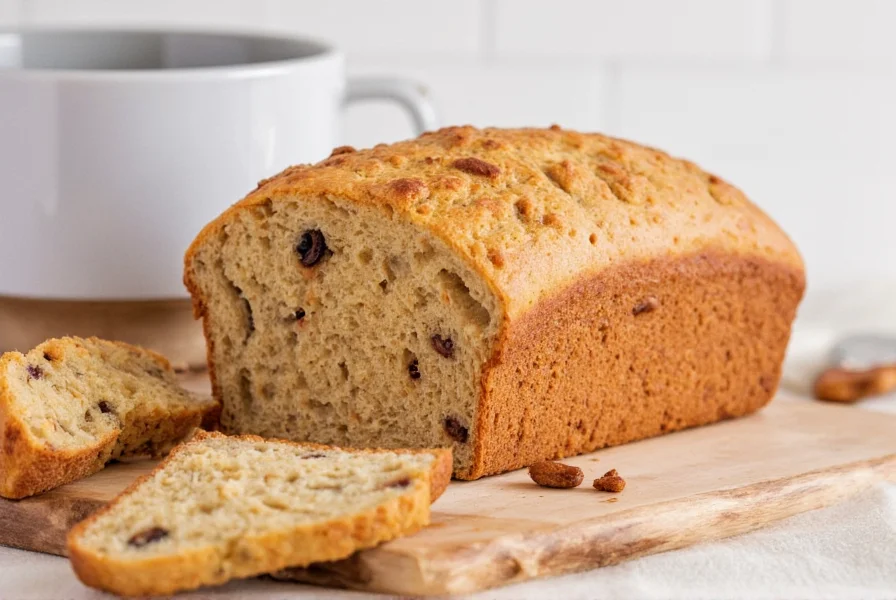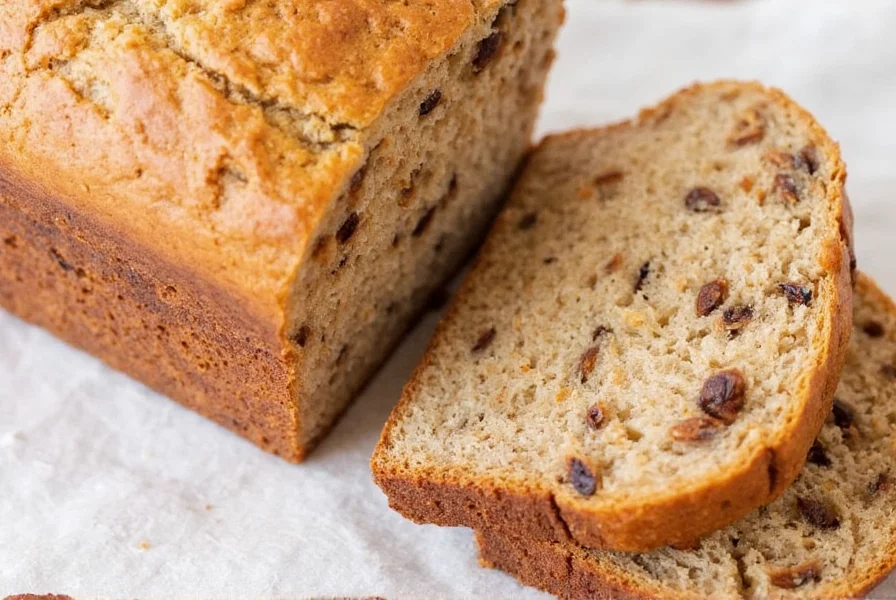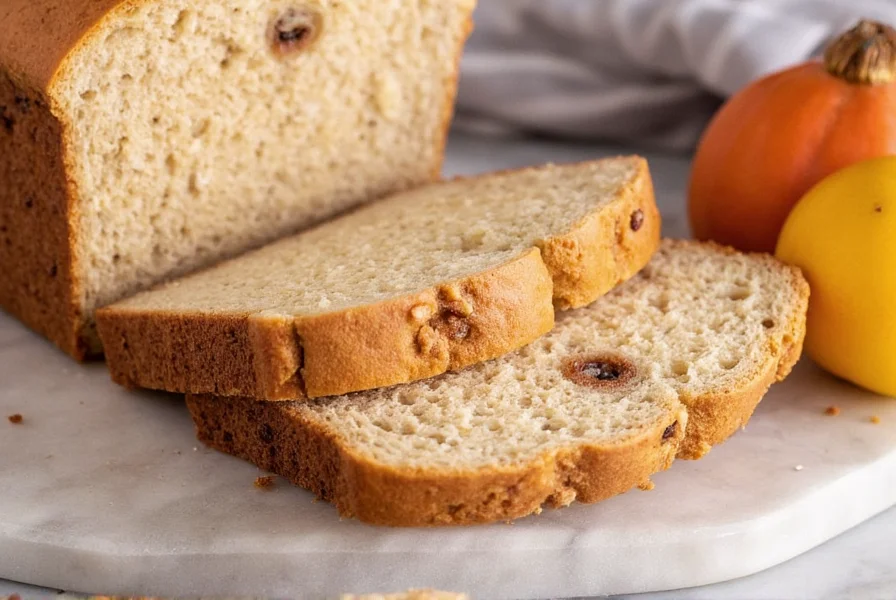If you've ever struggled with inconsistent results when making cinnamon raisin bread in your bread machine, you're not alone. Many home bakers face challenges with ingredient sequencing, proper measurements, and achieving that perfect balance of spice and sweetness. After testing dozens of variations across multiple breadmaker models, I've perfected a reliable method that delivers consistently soft, flavorful cinnamon raisin bread with minimal effort.
Why This Breadmaker Cinnamon Raisin Bread Recipe Works
The secret to successful breadmaker cinnamon raisin bread lies in precise ingredient sequencing and proper hydration levels. Unlike standard bread recipes, breadmaker recipes require careful attention to the order in which ingredients are added to prevent yeast contact with liquid before the cycle begins. This tested cinnamon raisin bread breadmaker recipe accounts for variations in bread machine designs while delivering professional-quality results.
| Ingredient | Measurement | Temperature Tip |
|---|---|---|
| Warm water | 1¼ cups | 105-110°F (warm to touch) |
| Unsalted butter | 2 tablespoons | Slightly softened |
| Granulated sugar | ¼ cup | Room temperature |
| Salt | 1½ teaspoons | Room temperature |
| Bread flour | 3 cups | Room temperature |
| Ground cinnamon | 2 teaspoons | Room temperature |
| Plump raisins | 1 cup | Chilled (prevents sinking) |
| Active dry yeast | 2¼ teaspoons | Dry and room temperature |
Step-by-Step Breadmaker Cinnamon Raisin Bread Instructions
Follow these precise steps for perfect results every time you make cinnamon raisin bread in your bread machine:
- Prepare your ingredients - Measure all components accurately using proper measuring cups and spoons. Don't skip weighing your flour for best results
- Add wet ingredients first - Pour warm water into the bread pan, followed by softened butter, sugar, and salt
- Add dry ingredients - Add bread flour, making a well in the center for the cinnamon. Sprinkle cinnamon into the well
- Position the yeast - Create a small indentation in the flour and add yeast without letting it touch the liquid
- Add raisins strategically - If your machine has a fruit/nut dispenser, use it. Otherwise, add chilled raisins during the second knead cycle
- Select appropriate settings - Choose the basic white bread setting, 1.5 lb loaf size, and medium crust
- Monitor the first knead - Check dough consistency after 5-7 minutes; it should form a soft ball

Proven Tips for Perfect Cinnamon Raisin Bread
These professional baking techniques transform good bread into exceptional bread:
- Chill your raisins - Cold raisins stay suspended in the dough rather than sinking to the bottom
- Measure flour correctly - Spoon flour into measuring cup and level off; don't scoop directly from the bag
- Control crust color - For lighter crust, reduce sugar by 1 tablespoon; for darker crust, add 1 extra tablespoon
- Prevent over-rising - If your kitchen is warm, reduce water temperature by 5 degrees to slow yeast activity
- Test doneness - Finished bread should register 190-200°F internally and sound hollow when tapped
Troubleshooting Common Breadmaker Issues
Even with the best cinnamon raisin bread breadmaker recipe, problems can occur. Here's how to fix them:
- Dense or heavy bread - Usually caused by too much flour or old yeast. Measure flour carefully and test yeast freshness
- Raisins sinking to bottom - Raisins were too warm or added too early. Chill raisins and add during second knead
- Bread collapsing after baking - Over-rising from too much yeast or warm environment. Reduce yeast by ¼ teaspoon
- Uneven cinnamon distribution - Mix cinnamon with a tablespoon of flour before adding to prevent clumping
- Crust too dark - Reduce sugar slightly or select lighter crust setting on your machine
Delicious Variations to Try
Once you've mastered the basic cinnamon raisin bread breadmaker recipe, experiment with these tasty modifications:
- Orange zest variation - Add 1 tablespoon fresh orange zest with the wet ingredients for citrus notes
- Walnut addition - Include ¼ cup chopped walnuts with the raisins for added texture
- Honey substitution - Replace sugar with honey for deeper flavor (reduce water by 1 tablespoon)
- Spice boost - Add ¼ teaspoon each of nutmeg and allspice with the cinnamon
- Glaze finish - Mix 1 cup powdered sugar with 2 tablespoons milk for a simple drizzle after cooling

Storing and Serving Your Cinnamon Raisin Bread
For optimal flavor and texture, follow these storage recommendations:
- Let bread cool completely on a wire rack before slicing (at least 1 hour)
- Store in an airtight container at room temperature for up to 3 days
- For longer storage, wrap tightly in plastic wrap and freeze for up to 3 months
- Thaw frozen bread at room temperature, then refresh in a 300°F oven for 5 minutes
- Serve slightly warm with butter or cream cheese for best flavor experience
Frequently Asked Questions
Can I use instant yeast instead of active dry yeast in my breadmaker cinnamon raisin bread?
Yes, you can substitute instant yeast for active dry yeast in a 1:1 ratio for your cinnamon raisin bread breadmaker recipe. Instant yeast dissolves more quickly, so you don't need to proof it first. However, don't reduce the amount - use the same 2¼ teaspoons specified in the recipe for best results in your bread machine.
Why do my raisins always sink to the bottom of my breadmaker cinnamon raisin bread?
Raisins sink because they're denser than the dough and warm raisins absorb moisture, making them heavier. To prevent this in your breadmaker cinnamon raisin bread recipe, chill raisins in the refrigerator for 30 minutes before adding them. If your machine has a fruit dispenser, use it. Otherwise, add chilled raisins during the second knead cycle when the dough is stronger and can better support them.
How can I make my cinnamon raisin bread less dense when using a breadmaker?
Dense bread typically results from too much flour or old yeast. For perfect texture in your cinnamon raisin bread breadmaker recipe, measure flour by spooning it into your measuring cup and leveling off (don't scoop). Test yeast freshness by mixing 1 teaspoon yeast with ¼ cup warm water and 1 teaspoon sugar - it should bubble within 10 minutes. Also ensure your water temperature is between 105-110°F for optimal yeast activation without killing it.
Can I make this cinnamon raisin bread recipe without a breadmaker?
Yes, you can adapt this cinnamon raisin bread breadmaker recipe for traditional baking. Mix ingredients as directed, let rise for 1-1.5 hours until doubled, shape into a loaf, place in a greased 9x5 inch pan, and let rise another 30-45 minutes. Bake at 350°F for 35-40 minutes until golden brown and internal temperature reaches 190-200°F. The breadmaker settings help automate the process, but the ingredient ratios work for both methods.
What's the best way to slice cinnamon raisin bread from the breadmaker?
For clean slices of your freshly made cinnamon raisin bread, wait until the loaf has cooled completely (at least 1 hour). Use a serrated bread knife with a gentle sawing motion. For uniform slices, consider using a bread slicing guide. If you prefer toasted bread, slice slightly thicker (about ¾ inch) as it will compress when toasted. Never slice bread while it's still warm, as this creates a gummy texture and damages the crumb structure.











 浙公网安备
33010002000092号
浙公网安备
33010002000092号 浙B2-20120091-4
浙B2-20120091-4